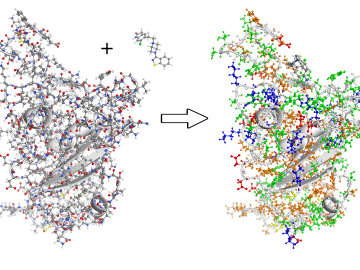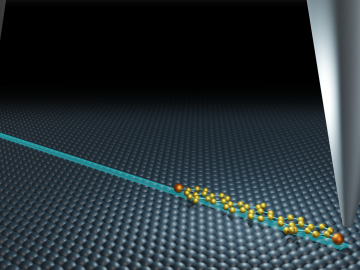
Filter News
Area of Research
- Advanced Manufacturing (8)
- Biology and Environment (35)
- Computational Engineering (1)
- Computer Science (8)
- Energy Science (51)
- Fusion and Fission (27)
- Fusion Energy (14)
- Isotopes (5)
- Materials (86)
- Materials Characterization (2)
- Materials for Computing (14)
- Materials Under Extremes (1)
- National Security (25)
- Neutron Science (24)
- Nuclear Science and Technology (12)
- Quantum information Science (8)
- Sensors and Controls (1)
- Supercomputing (74)
News Type
News Topics
- (-) Big Data (70)
- (-) Fusion (63)
- (-) Machine Learning (64)
- (-) Materials (147)
- (-) Molten Salt (10)
- (-) Quantum Science (89)
- (-) Security (29)
- (-) Simulation (61)
- 3-D Printing/Advanced Manufacturing (137)
- Advanced Reactors (37)
- Artificial Intelligence (127)
- Bioenergy (109)
- Biology (126)
- Biomedical (70)
- Biotechnology (38)
- Buildings (65)
- Chemical Sciences (83)
- Clean Water (32)
- Composites (33)
- Computer Science (216)
- Coronavirus (47)
- Critical Materials (28)
- Cybersecurity (34)
- Education (5)
- Element Discovery (1)
- Emergency (4)
- Energy Storage (107)
- Environment (202)
- Exascale Computing (65)
- Fossil Energy (8)
- Frontier (61)
- Grid (70)
- High-Performance Computing (125)
- Hydropower (12)
- Irradiation (2)
- Isotopes (58)
- ITER (9)
- Materials Science (145)
- Mathematics (11)
- Mercury (12)
- Microelectronics (4)
- Microscopy (51)
- Nanotechnology (58)
- National Security (81)
- Neutron Science (163)
- Nuclear Energy (113)
- Partnerships (68)
- Physics (64)
- Polymers (31)
- Quantum Computing (52)
- Software (1)
- Space Exploration (26)
- Statistics (4)
- Summit (70)
- Transportation (92)
Media Contacts

To better understand the spread of SARS-CoV-2, the virus that causes COVID-19, Oak Ridge National Laboratory researchers have harnessed the power of supercomputers to accurately model the spike protein that binds the novel coronavirus to a human cell receptor.

On Feb. 18, the world will be watching as NASA’s Perseverance rover makes its final descent into Jezero Crater on the surface of Mars. Mars 2020 is the first NASA mission that uses plutonium-238 produced at the Department of Energy’s Oak Ridge National Laboratory.

From the helm of a one-of-a-kind organization that brings nuclear fusion and fission expertise together to pave the way to expanding carbon-free energy, Kathy McCarthy can trace the first step of her engineering career back to

Collaborators at Oak Ridge National Laboratory and the University of Tennessee Health Science Center are developing a breath-sampling whistle that could make COVID-19 screening easy to do at home.

A new Department of Energy report produced by Oak Ridge National Laboratory details national and international trends in hydropower, including the role waterpower plays in enhancing the flexibility and resilience of the power grid.

The ExOne Company, the global leader in industrial sand and metal 3D printers using binder jetting technology, announced it has reached a commercial license agreement with Oak Ridge National Laboratory to 3D print parts in aluminum-infiltrated boron carbide.


Oak Ridge National Laboratory’s Center for Nanophase Materials Sciences contributed to a groundbreaking experiment published in Science that tracks the real-time transport of individual molecules.

Six scientists at the Department of Energy’s Oak Ridge National Laboratory were named Battelle Distinguished Inventors, in recognition of obtaining 14 or more patents during their careers at the lab.

The INFUSE fusion program announced a second round of 2020 public-private partnership awards to accelerate fusion energy development.


